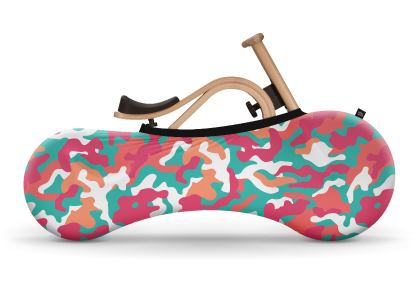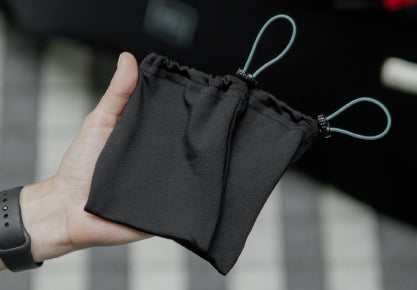How to train like a PRO cyclist

As most of all main cycling events are over for this summer, and the Kona Ironman championship has been canceled or to be more precise - postponed, it has left us feeling a bit empty but inspired. All those talented cyclists showing the best they can and setting new records. So we figured to take a look at their daily training program or some significant keys to success to improve your cycling performance, take notes and learn from the best.
So what are the base elements of a PRO cyclist training?
⦁ Personalised coaching
Each body responds differently to different exercises or intensities, that’s why the training should be personalised. The number of hours (volume), intensity and recovery needed to maximise your training differs from one person to the next and, for this reason, a personalised training schedule will enable you to unlock your potential. Keep in mind that training should be structured to your personal needs and availability, that way it allows your body for adequate recovery between major sessions and aims for realistic goals.

⦁ Don’t forget to rest
The thing that is as important as training is taking time off from it. Rough and intense training and racing is physically and mentaly heavy, that’s why all pro sportists take the ‘’off-season break’’. This period should be used to take a short break from training and allow yourself to recharge - both from a mental and physical perspective as well as provide you with a chance to review your season and plan ahead for the next.

The period of rest can be adjusted to your needs or feeling, but it usually lasts approximately two to four weeks. After 10 to 14 days of complete rest, most athletes begin some form of physical activity. The reason for this is that there is evidence to suggest that prolonged rest erodes many training adaptations that may have occurred during training over the previous season. Longer rest periods are therefore avoided.
⦁ Try to polarize your training
Many amateurs make the mistake of spending too much training time doing 'junk miles' where they are not training hard enough to make good progress or not going easy enough to aid recovery or stimulate adaptation. Keep it simple- make the hard sessions hard, and the easy sessions easy - this is one of the keys to success, and not just in cycling. Pro cyclists polarise their training by spending large amounts of time (roughly 75-80%) at low intensity, coupled with a smaller amount of time (15-20%) at a high intensity.

⦁ Add some strength training.
It’s been one of the most discussed questions whether to do strength training for cyclists or not. There has been a lot of research which shows adding strength work to your endurance training regime helps improve overall performance, with a large portion of pro cyclists now incorporating this new way of thinking into their personal programs.

Strength training can really improve your training when done correctly. It is suggested to do strength training 1-3 times a week. The goal of a strength training regime should include exercises where the muscle action, muscles engaged, and the movement pattern should mimic the rotational pedalling action of riding a bicycle.
Here’s a useful list of exercises that could step up your cycling game - CLICK HERE.
⦁ Track your performance
No matter if you’re interval training, racing or heading out for a long, slow ride, pacing your effort and staying within your pre-planned training zones and scores is obligated to get the most efficiency out of your workouts.
To take an advice from the pro’s book, track your efforts with a heart-rate monitor and power meter (a smart watch might be an easy solution). This keeps you from going too fast too early and allows you to maintain an even pace so you can finish all of your rides strong and confident.
⦁ Don’t forget about recovery
Training constantly and not giving yourself a break is a common error made by most amateur cyclists, as their purest intention is to become better and train harder. Pro cyclists place a special emphasis on recovery to ensure they get the best out of their training. There is an saying: ‘’Don’t walk if you can stand. Don’t stand if you can sit. Don’t sit if you can lie down.’’
On the bike, pros go hard all the time, but off the bike they are the kings of taking it easy.
Recovery can be carried out in a passive (a complete rest day) or active (an easy recovery session) form. Pro cyclists are highly trained and we often opt for active recovery methods rather than passive recovery methods. This may be the case for many well-trained amateur athletes as well.
You should include at least one active recovery session in your training plan every 3- 4 days. Those who have less training experience may initially respond to passive recovery better. We would advise consulting your coach on the forms of recovery that you respond to best and use them to optimise your training.
And the same goes to sleeping, if normally 6-8 hours would be ok, then as you’re increasing your training load, you should be sleeping a lot more. Pro athletes usually sleep for up to 10 hours
.
And another great thing after a good ride is a massage. A post-ride massage also speeds recovery and prevents muscle soreness by improving circulation, elongating muscle tissue and calming the nervous system. If you feel like this is out of reach or too much for to be done on regular basis, then a foam roller will do almost as good as a massage!

There are many things to be learnt from the pro athletes, but the main advice - find the right balance between working hard and resting. There’s no point in over-training that leads to a burnout, also it’s not efficient to stay in your comfort zone for too long.
As in all sports, sometimes the best results can be achieved by consulting a trainer, but with the amount of information that can be found online and combining it with listening how your body responds to new techniques, better results can be achieved within months!















Leave a comment